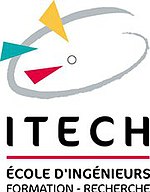| Titre : |
Synthesis of novel one-component photoinitiators based on thioxanthone derivatives |
| Type de document : |
texte imprimÃĐ |
| Auteurs : |
Baoling Tang, Auteur ; Xiaowei Ge, Auteur ; Qinwen Wang, Auteur |
| AnnÃĐe de publication : |
2022 |
| Article en page(s) : |
p. 1787-1797 |
| Note gÃĐnÃĐrale : |
Bibliogr. |
| Langues : |
AmÃĐricain (ame) |
| CatÃĐgories : |
CaractÃĐrisation
ComposÃĐs hÃĐtÃĐrocycliques
Encre
Formulation (GÃĐnie chimique)
Photoamorceurs (chimie)
PhotorÃĐticulation
Polyaddition
PolyÃĐthylene glycol diacrylate
ThioxanthoneLe thioxanthone est un composÃĐ hÃĐtÃĐrocyclique qui est un soufre analogue du xanthone. Le
Thioxanthone peut Être synthÃĐtisÃĐ par rÃĐaction de sulfure de diphÃĐnyle avec du phosgÃĻne en prÃĐsence de catalyseur de chlorure d'aluminium . Cette synthÃĻse peut Être considÃĐrÃĐe comme un cas particulier de l'acylation de Friedel-Crafts . Le produit de rÃĐduction est le thioxanthÃĻne.
|
| Index. dÃĐcimale : |
667.4 Encres |
| RÃĐsumÃĐ : |
Thioxanthone derivatives are synthesized as one-component photoinitiators via a simple condensation reaction between thiosalicylic acids and heterocyclic aromatic hydrocarbons in a concentrated sulfuric acid medium. TX-C (Thioxanthroneâcarbazole), TX-N-I (ThioxanthroneâN-methylindole) and TX-I (Thioxanthroneâindole) are characterized by 1HNMR (nuclear magnetic resonance), FTIR (fourier transform infrared spectroscopy), ultravioletâvisible spectrophotometry, fluorescence spectroscopy, elemental analysis and TG (thermal gravimetric analysis). TX-N-I and TX-I both possess an absorption characteristic similar to the parent thioxanthone with a maximum at 397nm (ε = 3240 L mol−1 cm−1) and 395 nm (ε = 1920 L mol−1 cm−1). The introduction of heterocyclic structures makes the maximum absorption peak red-shifted by 10 nm compared to TX. Its capabilities to act as initiator for the photopolymerization of PEGDA (polyethylene glycol diacrylate) and TMPTA (trimethylolpropane triacrylate) in the absence and presence of TEOA (triethanolamine) media are also examined. TX-N-I acts as an efficient initiator in the UV curable ink, whose light curing time is only 12 s. |
| Note de contenu : |
- Materials
- Characterization techniques
- Synthesis of thioxanthroneâcarbazole (TX-C)
- Synthesis of thioxanthroneâindole (TX-I)
- Synthesis of thioxanthroneâN-methylindole (TX-N-I)
- UV spectroscopy and photolysis
- Fluorescence spectroscopy and photolysis
- Theoretical Calculations
- Photopolymerization kinetics
- Table 1 : Photopolymerization of polyethylene glycol diacrylate
- Table 2 : Viscosity of oligomer and monomer at different ratios
- Table 3 : Optimum ink formulation |
| DOI : |
https://doi.org/10.1007/s11998-022-00649-3 |
| En ligne : |
https://link.springer.com/content/pdf/10.1007/s11998-022-00649-3.pdf?pdf=button% [...] |
| Format de la ressource ÃĐlectronique : |
Pdf |
| Permalink : |
https://e-campus.itech.fr/pmb/opac_css/index.php?lvl=notice_display&id=38497 |
in JOURNAL OF COATINGS TECHNOLOGY AND RESEARCH > Vol. 19, N° 6 (11/2022) . - p. 1787-1797
 Accueil
Accueil


 Accueil
Accueil


 Aller sur edunet
Aller sur edunet